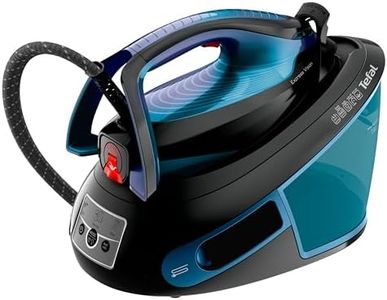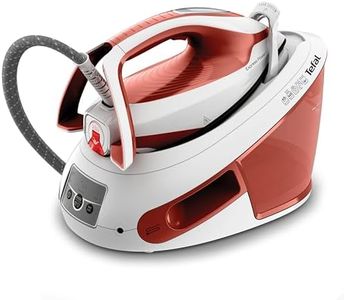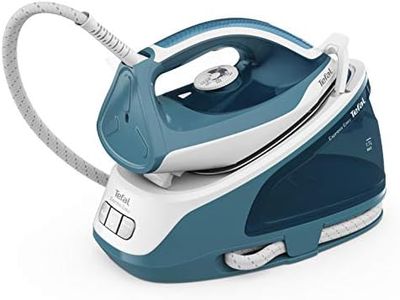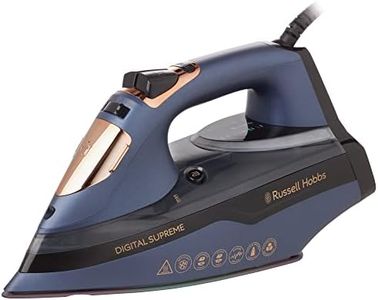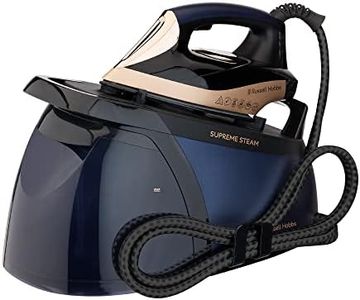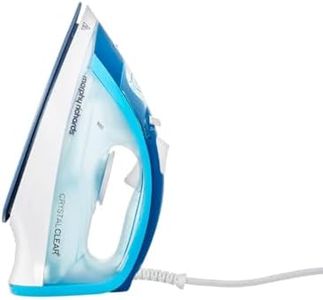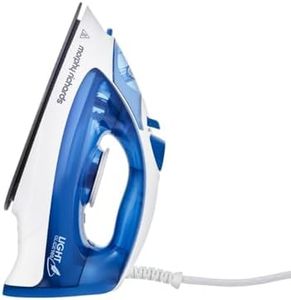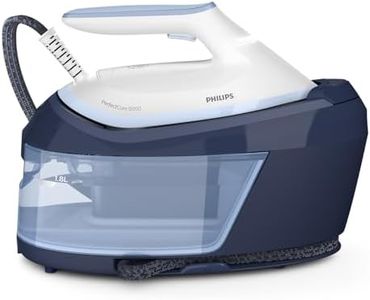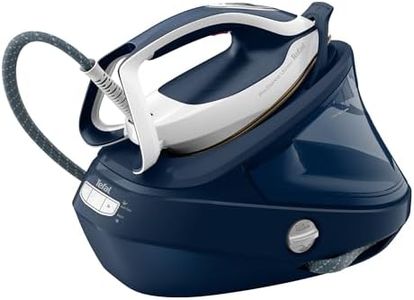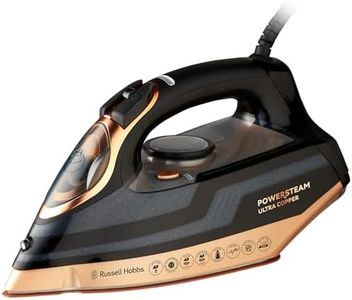We Use CookiesWe use cookies to enhance the security, performance,
functionality and for analytical and promotional activities. By continuing to browse this site you
are agreeing to our privacy policy
10 Best Iron Steam Station
From leading brands and best sellers available on the web.Buying Guide for the Best Iron Steam Station
Choosing the right iron steam station can make your laundry tasks much easier and more efficient. These appliances are a step above regular irons, providing more steam power, a separate water tank, and faster results, especially when dealing with large amounts of clothes or tough fabrics. The key to finding the best fit is to understand which features matter most for the way you’ll be using your iron steam station, and how those features align with your needs for convenience, speed, fabric care, and storage.Steam OutputSteam output is the amount of continuous steam an iron steam station produces and is usually measured in grams per minute. More steam helps to penetrate thick or stubborn fabrics and removes wrinkles more quickly. Low output models (around 70-100 g/min) are sufficient for occasional, light ironing and thinner fabrics. Mid-range options (110-130 g/min) suit regular household use, handling both light and moderate fabrics. Heavy-duty users, or those ironing a lot of bed linen or heavy garments, should look at higher outputs (over 140 g/min). Think about the type and amount of clothing you iron most often; more steam means faster results but can also use more water.
Water Tank CapacityThe water tank holds the water used to create steam. Smaller tanks (under 1 liter) mean a lighter, more compact machine, but you'll need to refill frequently. Medium tanks (1-1.5 liters) are balanced for most homes, offering enough capacity for a decent ironing session without constant refills. Large tanks (above 1.5 liters) are ideal for big families or long ironing periods but will take up more space and can be heavier when filled. Choose based on how much ironing you typically do in one session and how important convenience is to you.
Steam PressureSteam pressure, often measured in bars, determines how forcefully steam is released and how deeply it can penetrate fabrics. Lower pressure (4-5 bars) is enough for basic use or thinner fabrics. Mid-range pressure (5.5-6.5 bars) balances effectiveness and ease, making it suitable for most users. High pressure (7 bars or above) is best when dealing with very stubborn wrinkles or for heavy-duty tasks. If you deal with items like linens, jeans, or curtains, you'll benefit more from higher pressure; for everyday clothes, moderate pressure works well.
Heat-Up TimeHeat-up time is how long the steam station takes to be ready to use from a cold start. Fast heat-up models (under 2 minutes) are great if you often work in short bursts or need quick results. Average heat-up times (2-4 minutes) suit most households, while slower models (over 4 minutes) may feel inconvenient if you're in a hurry. Think about your routine—if you tend to iron everything at once, a slightly longer heat-up is less of an issue; if you iron as needed, quicker heat-up is more valuable.
Soleplate MaterialThe soleplate is the flat, heated part that glides over your clothes. Common materials include stainless steel, ceramic, and non-stick coverings. Stainless steel plates are durable and glide smoothly. Ceramic plates distribute heat evenly and are less likely to stick, making them gentle on delicate fabrics. Non-stick plates are easiest to clean and great for extra-smooth movement. Consider your fabric types—delicate or synthetic clothes may benefit from ceramic or non-stick, while heavy or frequent ironing can make stainless steel a practical choice.
Anti-Scale SystemAn anti-scale system helps prevent calcium buildup inside your steam station, which can extend its lifespan and keep steam performance steady. Some have removable cartridges, others use rinsing systems or built-in filters. If you live in a hard-water area, having a good anti-scale feature is important to minimize maintenance. For those in soft-water regions or infrequent users, this is less critical but still useful for ensuring appliance longevity.
Weight and PortabilityWeight and portability determine how easy it is to set up, move, and store your steam station. Lighter models are easier to handle and pack away, ideal for small spaces or if you move your iron around the house. Heavier stations may be harder to shift but often feel sturdier when in use. Think about your storage space and who will be using the iron—choose something that feels comfortable for you to lift and use regularly.


